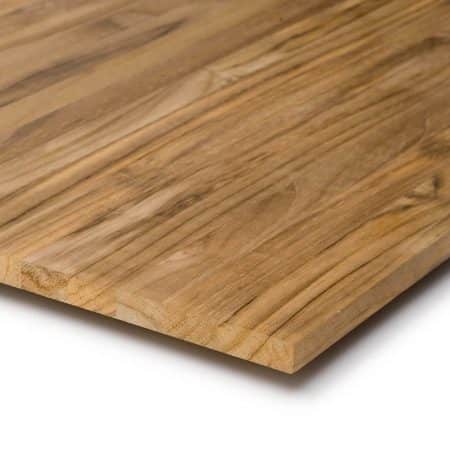
| Origin | Europe, North America, East Asia |
| bulk density | 0,65-0,76 g/cc |
| durability class | 2 – 4 |
| Compressive strength | 42-64 N/mm² |
| flexural strength | 60-110 N/mm² |
| Differential shrinkage (radial) | 0,15-0,22% |
| Differential shrinkage (tangential) | 0,28-0,36% |
| PH value | 3,9 |
| wood color | light leather brown, red oak light reddish gray to reddish brown |
| wood structure | Ring porosity and large wood rays |
| Usage | Interior design, in the furnishing sector, decorative purposes |
Oaks, genus Quercus of the family Fagaceae, include white oak (common oak, sessile oak), red oak and evergreen species such as the economically important cork oak. Their woods vary in appearance and properties. Oaks are deciduous or evergreen trees with alternate, lobed or unlobed leaves. They grow to a height of 30 to 40 meters and are over 1000 years old. The monoecious mixed-sex species have simple, wind-pollinated flowers, males in catkin shape. The female flowers develop into characteristic fruits - the acorns. Oak wood is versatile and is used in furniture, flooring and construction. The distinction between white oaks, red oaks and evergreen species shapes their use.
Oaks (Quercus) also offer a variety of woods with differences in color and structure. White oaks, such as English oak and sessile oak, have light leathery brown heartwood, while red oaks have pinkish brown heartwood. The distinctive annual rings are created by large earlywood pores with wood rays of various sizes. Oaks are medium-heavy and easy to work with, but hard wood can make it difficult to work with. Drying requires caution as drying too quickly can cause cracking and discoloration. Oak trees are home to numerous species of insects, indicating their long evolutionary history. Some species, such as the cork oak, are fire-adapted and germinate after fires. In Central Europe, oaks, especially English oak and sessile oak, are widespread and are the second most common deciduous tree genus after the European beech. Their presence extends back to the Tertiary, and fossil evidence shows their evolution and diversity over millions of years.
Oak wood, from English and sessile oaks, is characterized by its sour-spicy smell, hardness and ability to split. Technical data, including elastic modulus and strength values, make it ideal for furniture, stairs, floors, doors and windows. The hardwood is also used to make wine barrels. The bog oak, subfossil oak trunks from bogs, is particularly interesting. Acorns were historically food and were used to fatten pigs. The oak bark was used for dyes and tannins. White oaks and red oaks, although similar in strength, have specific uses. Red oak is suitable for interior work and furniture, while white oak is preferred for exterior applications and liquid containers, particularly in wine aging.
Sources: Wikipedia, Wood from the specialist (GD Wood)









